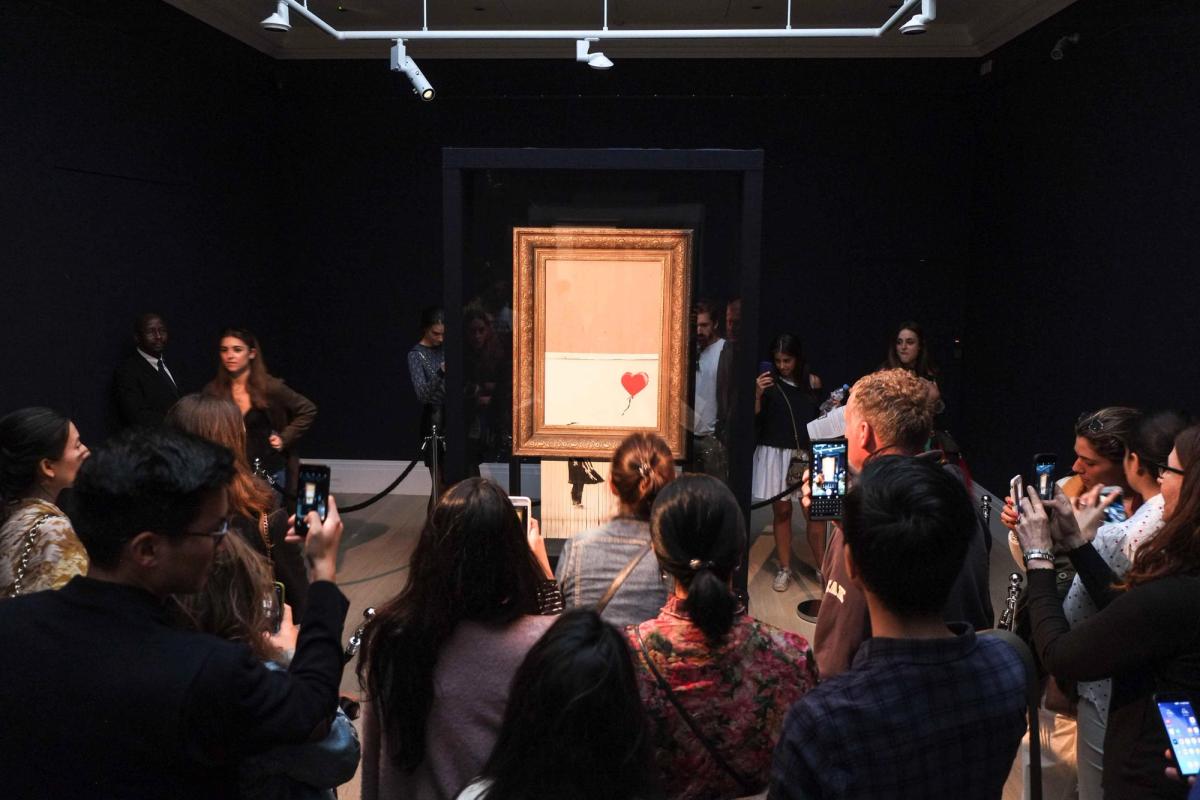In the weeks that have passed since one of Banksy’s Girl With Balloon paintings was half-shredded by remote control during a Sotheby’s sale on 5 October, there has been much speculation about whether the auction house was complicit in the prank.
The day after the painting was announced as sold on 11 October (under a different title, date and authentication certificate), Banksy released a statement saying there was “categorically no collusion” with Sotheby’s and he “was surprised as anyone when the painting made it past their security systems”. Sotheby’s, meanwhile, stressed it had “no prior knowledge of this event and were not in any way involved”.
But were there signs of things to come before that eventful evening? It is likely the seller was a close associate of Banksy’s. According to the original authentication certificate from Pest Control (Banksy's authentication board) dated 27 January 2009, the work was gifted to a Jo “for work on Barely Legal show, Los Angeles, 2006”. Banksy’s publicist, Jo Brooks, declines to say if it is her. The date of the painting is given as 2006.
Two stipulations of the consignment were that the work was placed in the evening sale and it was hung in the room for the auction. The final decision to allocate Banksy the last lot was down to Alex Branczik, Sotheby’s head of contemporary art in Europe.
Such conditions did not raise suspicions, Branczik says. “People often say, I will only give you this if you put it in an evening sale. Then there are people who want their works hung in the room because they believe that the assembled crowd are likely to bid more. And that was what was quoted to us."
Some have queried the low estimate of £200,000 to £300,000, which ensured there were plenty of eyes on the painting on the night; 30 phones were registered and 18 people bid, according to Sotheby’s. As is customary practice, the estimate was agreed in advance with the consignor. One underbidder, Jonathan Cheung of Maddox Gallery, says when he asked about the low estimate, Sotheby’s told him: “it was a gift to the consignor; they would be happy with anything”.
Then, what about the faux-gilt elephant in the room: the Victorian-style frame, which was deep enough to conceal a shredding mechanism? Branzcik says Sotheby’s approached Pest Control, asking if they could remove it, but were rebuffed by the studio.
“Pest Control said very clearly: the frame is integral to the art work, which it was, just not in the sort of way that we thought. We also had a third-party conservator look at the work,” he says. So how did the conservator not spot the slit at the bottom and question the frame’s double thickness and apparent weight? “You address what you see, it was more like a sculpture. If it says the frame is integral, you don’t rip it apart,” Branzcik says.
Oliver Barker, the auctioneer on the night, points out that Banksy often employs misshapen frames in his works, “and that’s part of the joke”. He adds: “The accusation that we were somehow negligent in the way this was catalogued does not stand up. We did everything. Going forward, are we going to question a frame like this? Absolutely.”
A further twist in the tale came with the announcement a week after the auction that the original buyer, an anonymous female European collector, decided to proceed with the sale for £1.04m, which includes £182,000 in fees. Banksy designated it a completely new work, giving it the title Love Is In the Bin (2018) and issuing a new authentication certificate.
So, did Banksy ultimately pay the price by accepting liability for his stunt? “Pest Control has released a new certificate with this new work, so if you want an admission of liability by Banksy, that’s it,” Barker says. Is it possible Banksy could have been made to pay for the damaged work? “We don’t know because we’ve resolved it, it’s been sold,” Barker says.
Or could Sotheby’s have been expected to foot the bill, given that the work was damaged while in their possession? It’s a moot point, according to a spokeswoman for the auction house.
The new narrative is that Banksy did not destroy a work on its premises, he created one, adding value not detracting. “It is a different work to the one that appeared in the catalogue, but nonetheless it is an intentional work of art, not a destroyed painting,” the Sotheby’s spokeswoman says.
As Branczik puts it: “The work was not completed until 9 something pm on Friday 5 October. This is the art work that Banksy intended, it was designed to be like this.”


